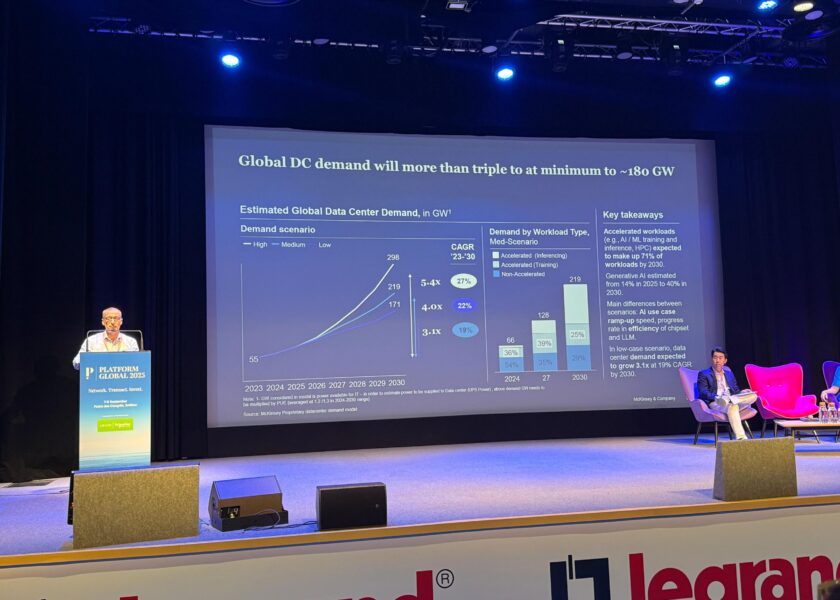The EuroHPC Joint Undertaking (EuroHPC JU) network of AI Factories — high-performance computing facilities optimized for artificial intelligence — is a key component of Europe’s strategy to strengthen digital sovereignty and competitiveness. These centers aim to provide start-ups, SMEs, researchers, and industry players with access to AI-optimized supercomputers, data, talent, and expertise, enabling Europe to become a sustainable “AI continent.” So far, 19 AI Factory locations have been selected across 16 EU Member States, including Romania. The network is being developed gradually, connecting infrastructures, supercomputing centers, universities, start-ups, and industry into an integrated European ecosystem for AI innovation.
We spoke with Adrian Victor Vevera, General Director of the National Institute for Research and Development in Informatics – ICI Bucharest, about Romania’s first AI Factory project — its objectives, coordination, and implementation plans.

- What is ICI’s role within the consortium, and how are the partners involved?
The National Institute for Research and Development in Informatics – ICI Bucharest is the national coordinator of the RO AI Factory consortium and the host entity of the future AI-optimized supercomputer. Its role is to ensure the strategic, operational, and technical coordination of the entire project, as well as the integration of the infrastructure into the EuroHPC European ecosystem.
Consortium partners contribute complementarily: technical universities (the POLITEHNICA University of Bucharest and the Technical University of Cluj-Napoca) provide academic expertise and skills development; research institutes (INCDSB, ICIA) support the development of AI applications in areas such as life sciences and data modeling; while industry and association partners (Transilvania IT, CNIPMMR, RoDIH) ensure the connection with the private sector, start-ups, and SMEs. Together, the consortium functions as an integrated platform bringing together research, education, and innovation.
- Where will the AI Factory be located, and what infrastructure will it host?
The RO AI Factory will be hosted at the ICI Bucharest data center, which already features enterprise-grade infrastructure designed for critical systems operation. The dedicated space for the supercomputer is equipped to accommodate high-density hardware and includes redundant power supply, modern liquid- and air-cooling systems, climate control, monitoring, and physical security. The data center is connected via the RoEduNet network to the GÉANT European research infrastructure, with the possibility of bandwidth expansion. In parallel, ICI Bucharest is upgrading its power and cooling capacities to support the new AI infrastructure.
- What is the expected computing power of RO AI Factory?
The RO AI Factory supercomputer will be a EuroHPC-class system, optimized for artificial intelligence workloads, advanced modeling, and the training of foundation and large language models (LLMs). It will deliver an unprecedented computing capacity in Romania, with a theoretical peak performance exceeding 5 exaFLOPS in AI operations. This places it among the most advanced AI systems in Central and Eastern Europe, capable of training and deploying next-generation artificial intelligence models — including large-scale generative and multimodal models. Through this capability, RO AI Factory will accelerate scientific research, industrial digitalization, and the development of innovative solutions with major economic and societal impact.
- What is the budget, and what is the estimated operational period?
The total estimated budget of €50 million covers both the acquisition and implementation of the hardware and software infrastructure and its operation over a five-year period. The funds will be used to procure the supercomputer and supporting infrastructure and to cover operational expenses — energy, maintenance, staffing, and connectivity — for the full five years. The budget also includes funding for the development and provision of AI services, training programs, start-up support initiatives, and ecosystem-building actions, implemented over a three-year contractual period.
The project’s financial model incorporates long-term sustainability mechanisms through national co-funding and integration with the EuroHPC and Digital Europe programs, ensuring that the RO AI Factory continues to operate beyond the initial implementation phase.
- What team and human resources will be involved?
The RO AI Factory operational team will initially include over 50 specialists, such as system engineers, AI and HPC experts, researchers, software developers, trainers, and AI ethics and compliance specialists. Recruitment will be carried out from among the consortium institutions, academia, and the private sector, through dedicated training and talent-attraction programs.
Romania already has a strong base of professionals in IT and engineering sciences, and the project aims to directly contribute to reducing brain drain by providing a competitive research and innovation environment aligned with European standards.
- Who will benefit from the infrastructure, and how can they access it?
RO AI Factory is designed as an open and accessible infrastructure for a wide range of users: academic and research institutions, start-ups, SMEs, technology companies, and public institutions. Access to computing resources will be provided through calls for projects, proposals, or subscription-based models, depending on user category.
Private IT and related companies will be able to use the platform for training their own AI models, testing AI solutions, and optimizing commercial products. There will also be dedicated acceleration programs, mentorship sessions, and training workshops to help the private sector leverage the infrastructure and expertise available through RO AI Factory.
- What is the implementation timeline, and what are the main milestones?
The RO AI Factory project will follow a phased implementation plan over approximately three years:
- Year 1: hardware procurement, site preparation, and installation of core systems.
- Year 2: service integration, interconnection with national and European data networks, and the launch of user programs.
- Year 3: full operationalization of the national AI ecosystem and expansion of services for business and public administration.
It is estimated that RO AI Factory will become fully operational by the end of 2027, strengthening Romania’s position as a regional hub for AI innovation in Central and Eastern Europe.



